Best guitar effects pedals 2025: Our pick of effects in every pedal category
Looking for the right delay, reverb, fuzz, flange, or overdrive for your pedalboard? We’ve rounded up the best of everything
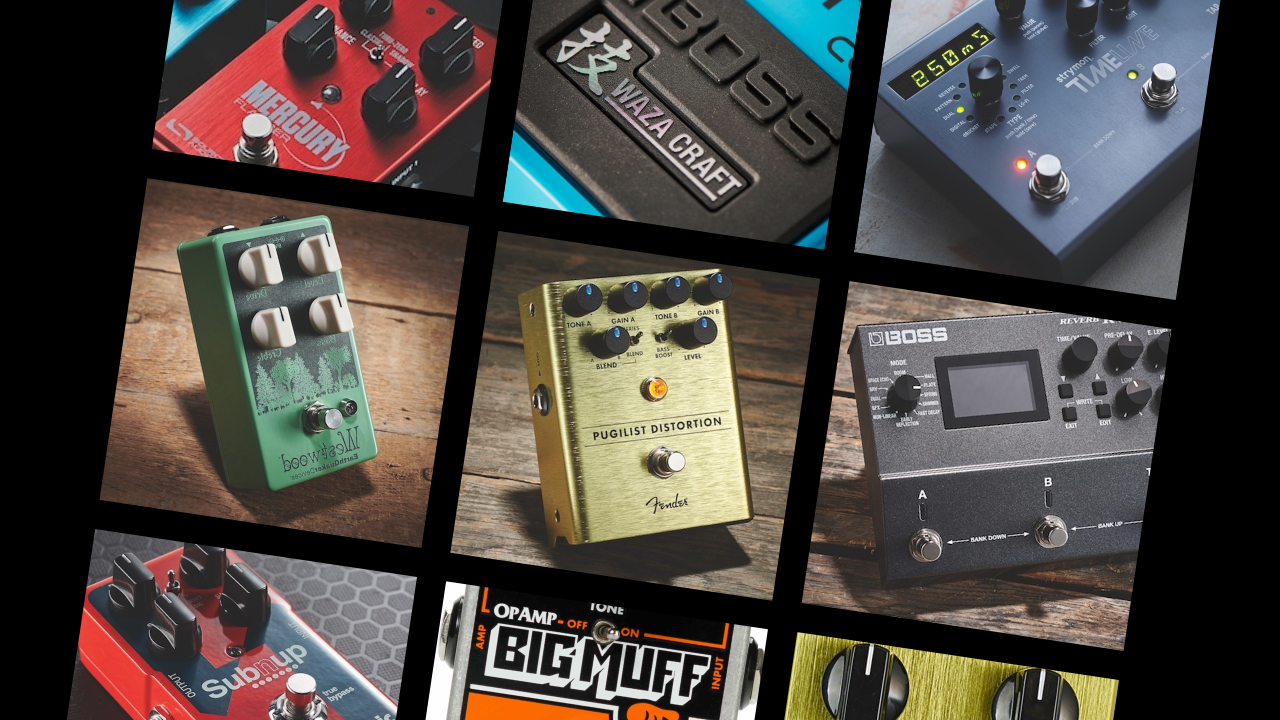
It's really hard to choose which of the best guitar effects pedals to buy. There are so many types, brands and styles to choose from, all offering very different takes on the same thing. Some guitarists opt to combat their option paralysis by sticking with a simple tuner-and-wah setup, and others choose to buy one (or more) of everything. There's no wrong answer - but we know which we prefer the sound of.
Often, the first effects pedal opens the floodgates for the rest of them. You buy one, then another, and then you buy a pedalboard with space for five pedals - and it'd be criminal to leave that extra space unfilled. We've heard the story many times. Unlike electric guitars or amps, even if you live in a tiny apartment in one of the world’s busiest cities, you will always have space for another stompbox on your pedalboard. Pedals are also infinitely more affordable, with budget options starting as low as £20/$25 before the £75/$100 mid tier and finally up to the £200/$250+ deluxe units.
That doesn’t necessarily mean the most expensive models are the ones to go for, however. As this round-up of what we consider to be the best guitar effects pedals in each category right now will prove, high-quality effects are now available at all price points. We've found what we think is the best pedal for each of the main pedal categories, and they're in no particular order in this guide.
We've included some in-depth buying advice at the end of this guide, so if you'd like to read it, click the link. If you'd rather get straight to the products, then keep scrolling.
Best guitar effects pedals: Our top picks
Choosing one or two top picks is a difficult decision to make, especially when looking at this product list in this particular guide. All of the pedals on this list are here because they're one of the very best in their product category, so realistically they could all be top picks - but our number one favourite is the Fender Pugilist Distortion. Frankly, we've never been so impressed by the sound of a budget-friendly distortion pedal, and if this pedal was $/£200+ we'd still want one.
Another favourite is the EarthQuaker Devices Plumes. Similar to the Pugilist in the sense that it has the capability to drive your amp to the very edge, the Plumes can also do lower-gain and clean boost work exceptionally well. It's under $/£100 too.
The Strymon TimeLine is our third and final top pick. Although like we said, every pedal on this list is up there, the TimeLine is an incredibly capable pedal that will create virtually any level of ambience you could imagine. If you like delay, this is the pedal for you.
Best guitar effects pedals: Product list

1. Fender Pugilist distortion
Our expert review:
Specifications
Reasons to buy
Reasons to avoid
Those clever people at Fender have stacked the Pugilist with all the gain you could ever need, and even if it takes a bit of time to dial in the perfect sound and negotiate the two gain channels via the blend, there’s a whole lotta fun to be had.
Yes, it can function as an overdrive, but we’re on the hunt for the best distortion pedals, and the Pugilist understands this, with oodles of gain that can be shaped to react to your pickups.
Mode A is more overdrive/crunch; Mode B saturates the tone for a more modern metal tone; while the bass boost is excellent for fattening up single coil tones.
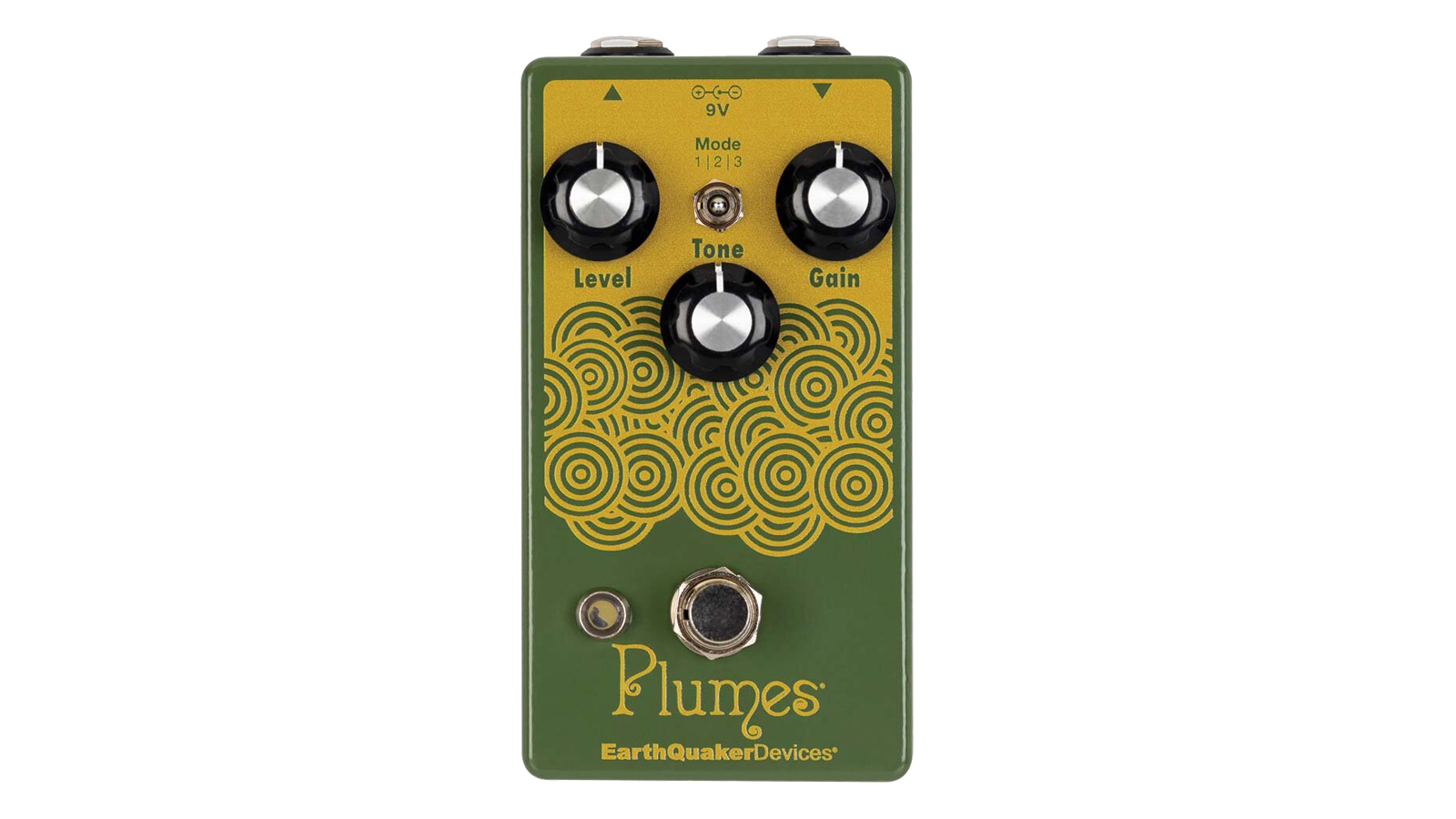
2. EarthQuaker Devices Plumes
Our expert review:
Specifications
Reasons to buy
Reasons to avoid
EarthQuaker Devices is best known for making some of the most impressive pedals on the market. Whether they’re weird, wacky or just downright insane, EQD’s products are finding their way onto more and more pedalboards all around the world - and they should be on yours too, with the Plumes.
At a shade under $/£100, the Plumes is very reasonably priced against other overdrive pedals from boutique brands. One thing we love about the Plumes is just how easy it is to get a great sound out of it with only level, tone and gain controls to tweak. In virtually every position, these dials will make the Plumes sound good - but when you also take into account the three mode switches, a whole new floodgate of versatility is opened.
Mode 1 offers symmetrical LED clipping which adds more crunch and compression to your tone - Marshall-style. Mode 2 is a stunning clean boost which enables you to maintain your amp tone, and mode 3 uses asymmetrical silicon diode clipping to create a little more transparency and tonal clarity. We found modes two and three to be our favourites. The only downside is the volume change when you change modes, but this is a minor issue in the grand scheme.

3. Strymon TimeLine
Our expert review:
Specifications
Reasons to buy
Reasons to avoid
The one must-have delay pedal of them all, the TimeLine functions as an all-encompassing echo factory with 12 different types included (‘delay machines’ in Timeline-speak), plus a stereo 30-second looper and an onboard memory that can store 200 rewritable presets in 100 banks of two.
There's a colossal range of sounds onboard, especially the pitch-shifted modes, which are ideal for creating ambient soundscapes, while the analog and tape sounds are as authentic as they come. Several ‘studio-delay-in-a-stompbox’ pedals are available, often at prices way above what you’d normally pay for a single pedal, and the TimeLine is one of the most respected of that type.
In our view, Strymon has got the balance of facilities, control options and a comprehensive range of delays just right. Quite likely all you could ever want in a delay pedal.
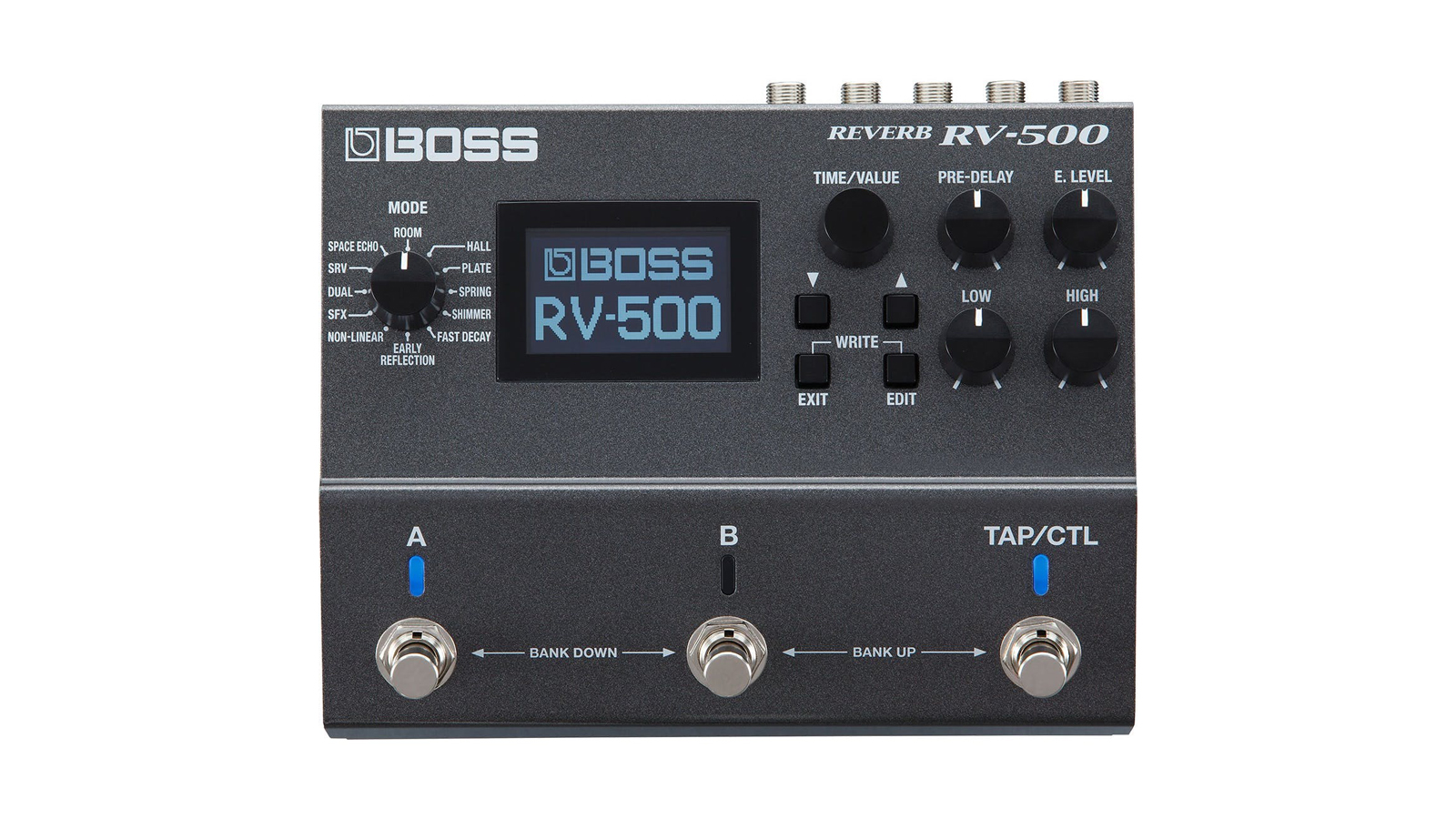
4. Boss RV-500 reverb
Our expert review:
Specifications
Reasons to buy
Reasons to avoid
This Boss reverb pedal is a large-format powerhouse that offers a whole world of ambience delivered at the highest quality, with 32-bit AD/DA, 32-bit floating point processing and 96kHz sampling rate. The jam-packed unit boasts three footswitches, digital delay options and 12 modes with 21 unique reverb types – all with a wide range of adjustable parameters, from decay, density and modulation to EQ, ducking and more.
For good measure, there’s also Roland classics like the SRV-2000 Reverb and RE-201 Space Echo. Additionally, the RV-500 features an A/B Simul mode, making it possible to use two reverb patches at once, close to 300 onboard patch memories, selectable buffered-bypass or true-bypass operation and the capability to interface with MIDI control devices. A seemingly endless array of options and combinations, all in Boss’s most powerful and versatile reverb processor to date.

5. Electro-Harmonix Op-Amp Big Muff Reissue fuzz
Our expert review:
Specifications
Reasons to buy
Reasons to avoid
While it’s true that many household names have used the Big Muff over the years, perhaps the band most associated with the pedal is Chicago-based alternative legends Smashing Pumpkins. On their 1993 classic Siamese Dream, they gatecrashed the grunge party with their 'guitar army', and had legions of guitarists scratching their heads as to how to make that sound.
Of course, part of the answer was 'a lot of overdubs', but when the word got out that Billy Corgan had used a Big Muff fuzz pedal on the record, the pedal became hugely sought- after overnight. Unfortunately for wannabe soundalikes, Billy's Big Muff was actually an unusual vintage op-amp version.
Due to availability of parts, the design of the Big Muff shifted over time, and the op-amp version, which was a completely different circuit from the quad-transistor original Big Muff, was comparatively rare. Billy had just gotten lucky that he picked up that specific version from a pawnshop.
Until recently, your only option was a boutique clone, rare original, or building your own. But luckily, EHX recently reissued it, so you too can bask in its fuzzy glory.
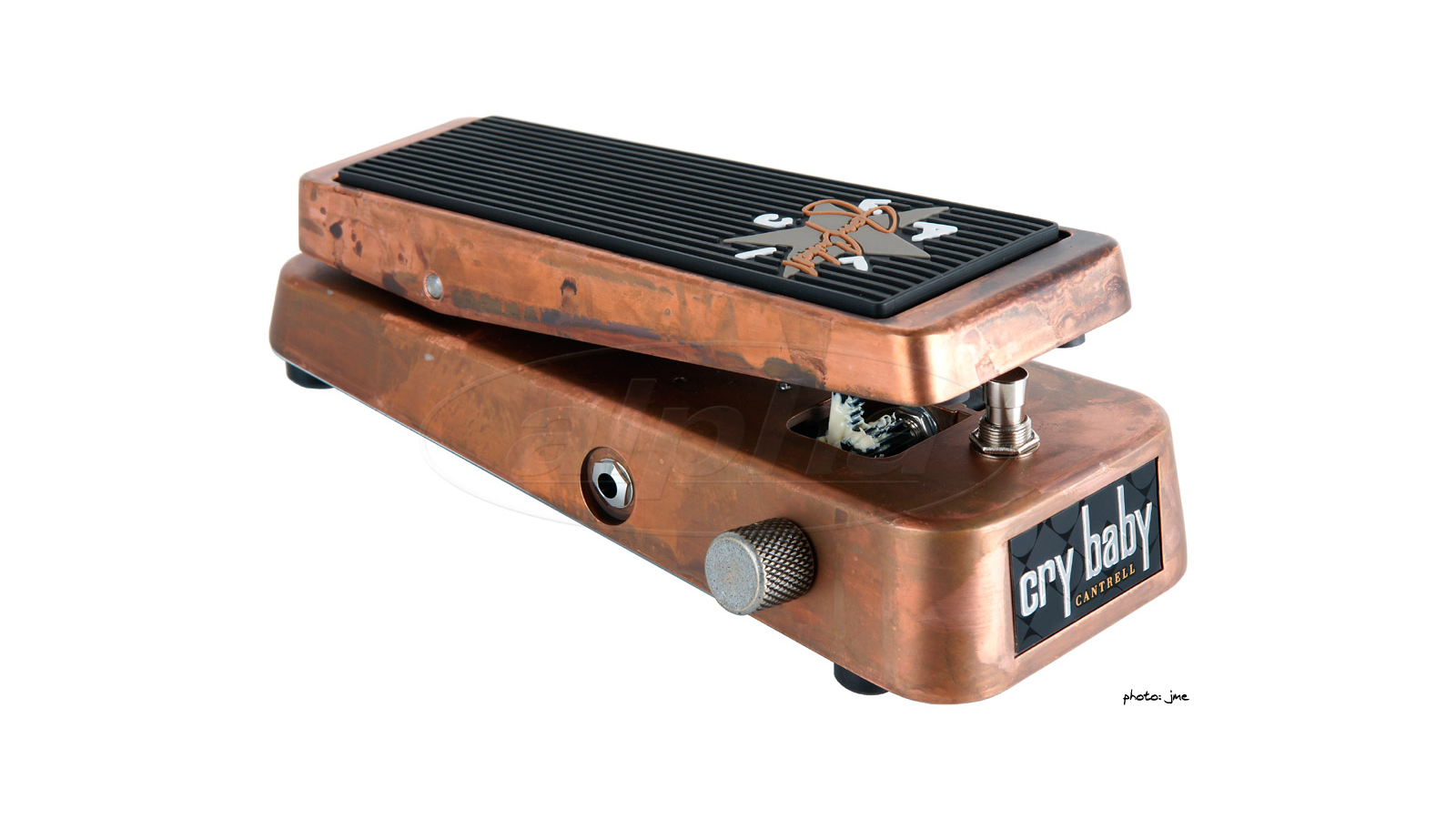
6. Jim Dunlop JC95 Jerry Cantrell wah
Our expert review:
Specifications
Reasons to buy
Reasons to avoid
There’s a very simple reason why Jerry Cantrell’s signature wah pedal has been spotted under the noses of tone connoisseurs and virtuosos like Guthrie Govan and Richie Kotzen over the years – it makes sure you always cut through.
With a darker tonal spectrum than your stock Cry Baby, the JC95 gives you maximum control of your range by way of an adjustable Fine Tune knob. Thanks to Cantrell's predilection for slicing mids, you won't get bogged down with muddy bottom-end tones or shrill highs, instead getting a clear, throaty effect that's ideal for the careful tone-master and the stomp-happy guitarist. To top it all off, this is also one of the classiest-looking wahs ever made!
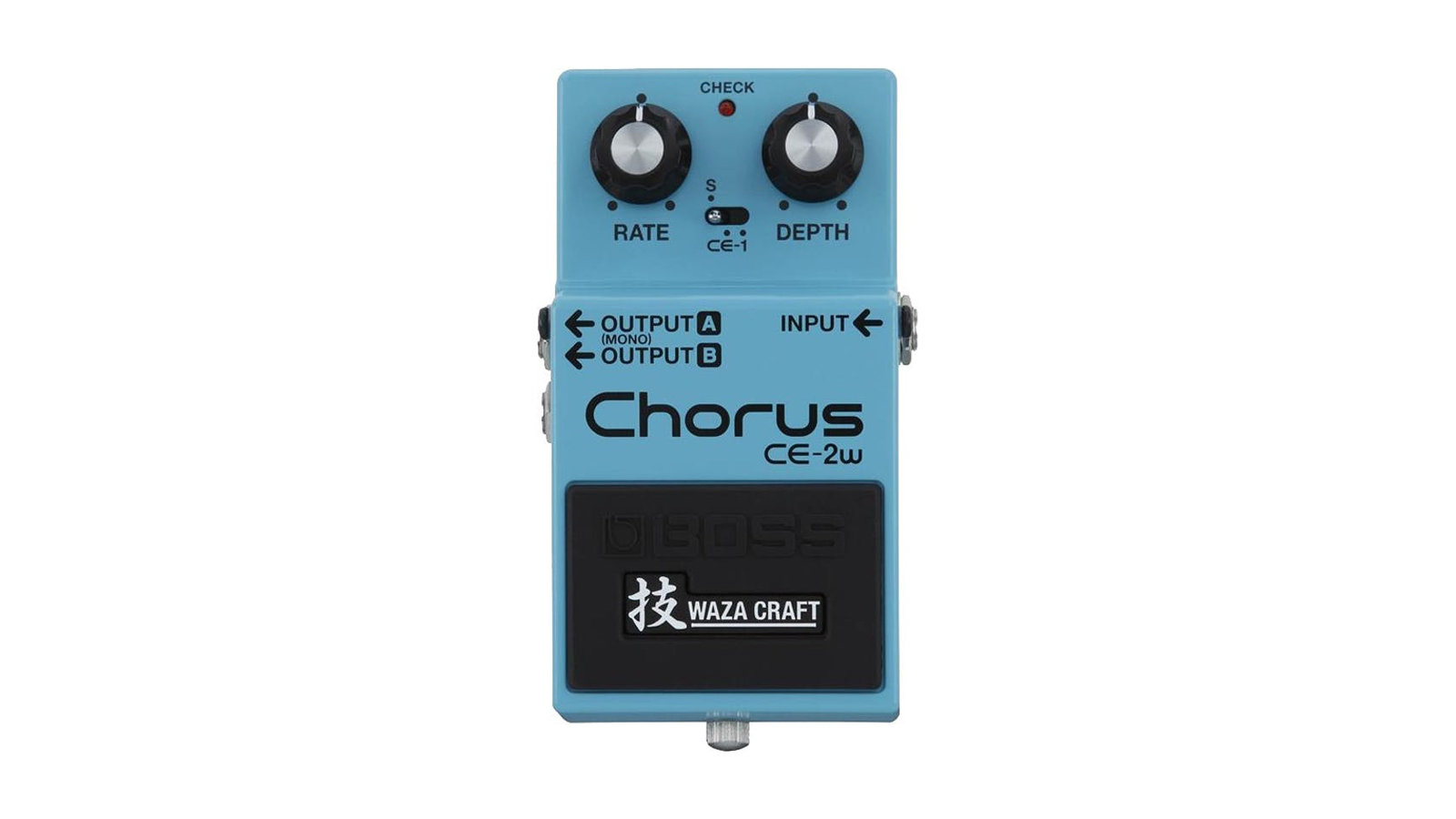
7. Boss CE-2W Waza Craft chorus
Our expert review:
Specifications
Reasons to buy
Reasons to avoid
The Boss CE-2 Chorus, and its big-brother predecessor the CE-1 (along with the same effect built into the Roland Jazz Chorus amp), defined the sound of chorus during the late Seventies and Eighties. So when Boss announced that it was offering a Waza Craft version of the beloved CE-2 called the CE-2W, we were certainly intrigued, given the stellar track record of Boss's previous Waza Craft offerings.
The CE-2W Waza Craft combines two Boss effects in one – the CE-2 and the mother of all chorus pedals, the CE-1, complete with its chorus and vibrato sections. With the exception of the mini three-way toggle switch for selecting the CE-2, CE-1 chorus or CE-1 vibrato modes, a second 1/4-inch output jack (direct only) that delivers stereo chorus/vibrato effects and the Waza Craft logo embedded in the rubber on/off switch pad, the CE-2W looks identical to the original CE-2.
Sound-wise, it’s the most perfect match we’ve ever experienced between an original product and its reissue – that unmistakable thick, lush, shimmering Boss chorus that we’ve all heard on a million classic recordings from the likes of Rush, the Pretenders and even Metallica.

8. MXR EVH Phase 90 phaser
Our expert review:
Specifications
Reasons to buy
Reasons to avoid
Could there be a more iconic phaser sound than Eddie Van Halen’s? Probably not – which is precisely why the EVH Phase 90 remains one of the most popular effects pedals made by MXR. It not only sounds better than virtually all other phaser pedals, offering some of the thickest swirls and warmest warbles made famous on anthems like Atomic Punk, Eruption and Ain't Talkin' 'Bout Love, it looks the part too – thanks to the usage of Eddie’s instantly recognizable Frankenstein stripes.
This phaser might only have one knob for speed, but the script switch allows users to toggle between the more vintage-sounding original Phase 90 and the more modern block logo version. If you’ve already got the right kind of gain sorted, then all you need is this pedal for instant Van-Halen-in-a-box…
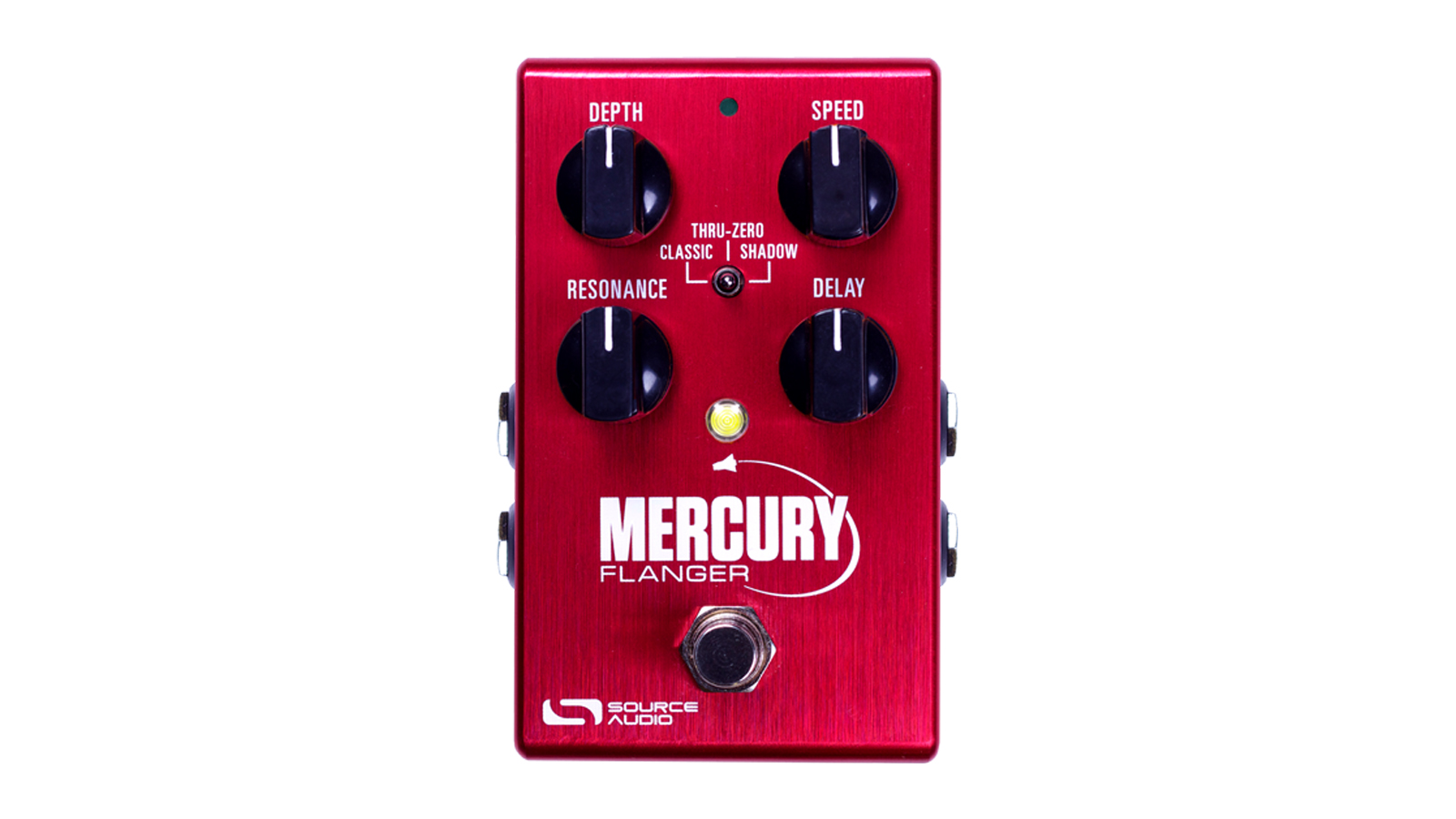
9. Source Audio Mercury flanger
Our expert review:
Specifications
Reasons to buy
Reasons to avoid
This stereo flanger might not be the most affordable pedal of its kind out there, but if you’re serious about that jet-engine whoosh - which, let’s face it, can often sound thin at the more budget end of the spectrum - then it’s definitely worth every cent.
The Mercury offers three types of flanger: from its classic mode to the Thru-Zero tape flange and finally the Shadow Flanger. There are also options for presets, analog buffered or relay based True Bypass and tap tempo to set your modulation rate. The icing on the cake? This pedal also has an on-board delay control, which more than lives up to its promise of allowing users to explore that beautiful cosmic space between chorus and flanger.
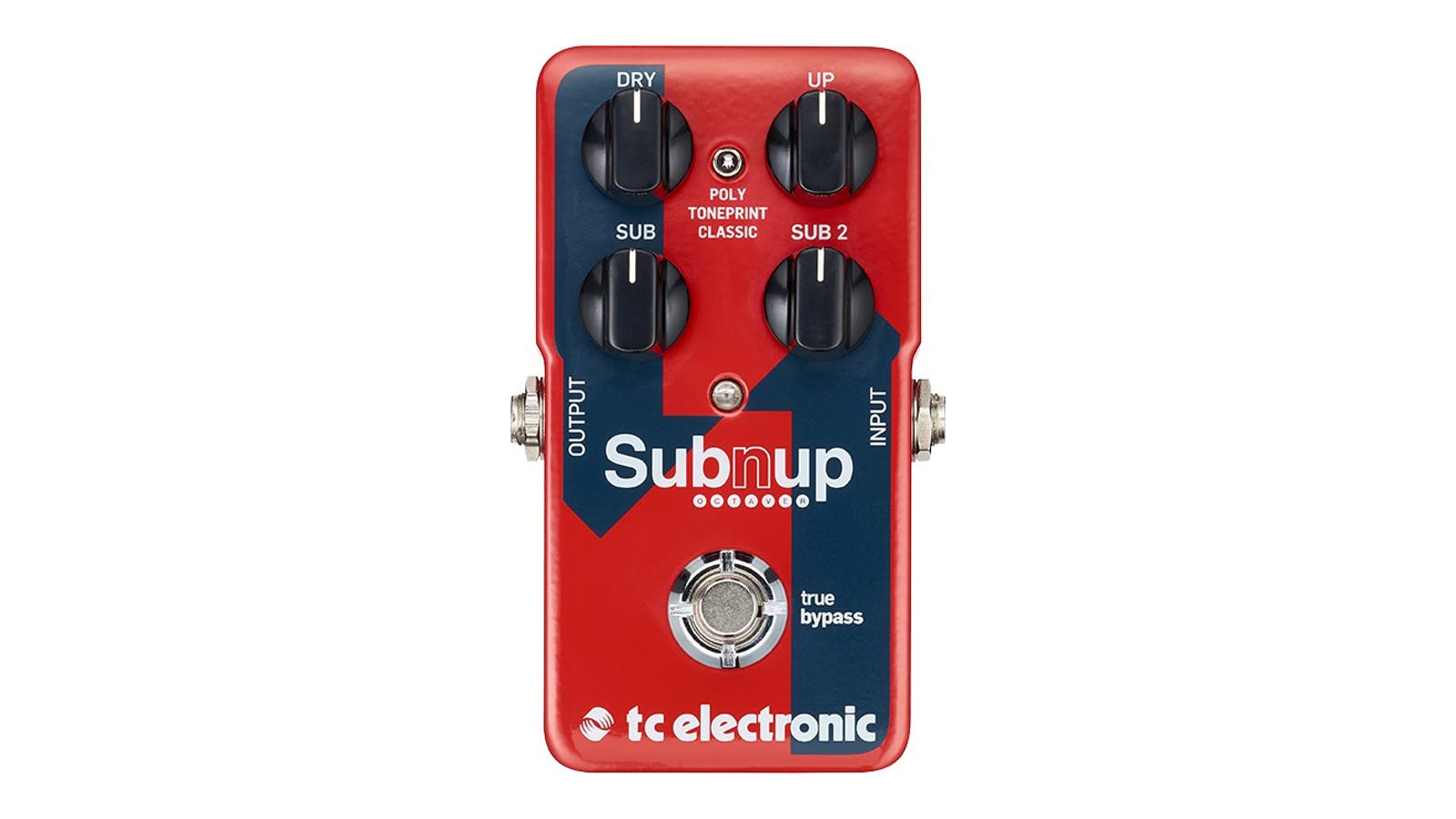
10. TC Electronic Sub ‘N’ Up octave
Our expert review:
Specifications
Reasons to buy
Reasons to avoid
Arguably one of the most popular pitch-shifters since the legendary DigiTech Whammy, the polyphonic Sub ‘N’ Up octave can handle virtually anything you throw at it – from complex chords to fast single-note riffs. But it can do a whole lot more thanks to the TonePrint editor, which gives the option to add modulation into the mix as well. Considering it’s one of the cheaper options on the market, you get a lot for not much money.
Most importantly of all, however, it tracks fast and flawlessly, and for those who like the glitchiness of older monophonic pitch-shifters, it also offers a monophonic mode. Anyone unsure about the size and concerned about limited space on their 'board will be pleased to know there is a mini version available too.

11. Source Audio Vertigo tremolo
Our expert review:
Specifications
Reasons to buy
Reasons to avoid
Those sonic alchemists at Source Audio perfected the sound of three of the most iconic amp tremolo sounds with their Vertigo tremolo pedal: the optical-style tremolo from a 1967 Fender Vibrolux; the Fender ‘brownface’ series’ Harmonic wobble; and a Bias sound, similar to the tremolo on a Vox AC30.
There’s more to it than that, of course, thanks to the shape control. This adjusts between square wave, sawtooth and everything in between, while Source Audio’s Neuro app can take the sounds into entirely different realms. The Vertigo combines authenticity and eccentricity in perfect harmony.

12. DryBell Vibe Machine V2 vibe
Our expert review:
Specifications
Reasons to buy
Reasons to avoid
If you’re a fan of Jimi Hendrix, Robin Trower, Pink Floyd or Pearl Jam, then you will probably know what a Uni-Vibe sounds like. The four-stage phaser, initially inspired by the whoosh and spin of rotary speakers, has been one of the most popular modulation effects in rock history – perfect for melting minds with its hypnotising and pulsating psychedelic throb.
While many pedals have attempted to recreate that legendary sound over the years, very few can rival the DryBell Vibe Machine – and its second incarnation sees even more functionality added into an all-analog, tidy and compact unit that won’t eat into your board.
Anyone who’s tried one will most likely tell you that its rich, three-dimensional harmonics and textures sound incredible from the word go, but the Vibe Machine V2 also allows you to sculpt and tweak more than any vibe pedal ever made. Which is exactly why Joe Satriani was seen using one on last year’s Experience Hendrix tour.
Meanwhile, Billy Idol legend Steve Stevens, who uses one in his new Deadland Ritual supergroup, describes DryBell’s creation as “just amazing, with a custom mode that sounds stunning”, citing the V2 as “even better than the old version, which is hard to believe”. High praise indeed!
Best guitar effects pedals: buying advice
What guitar effects pedals should I buy?
MusicRadar's got your back
Different pedals suit different needs. If you’re the kind of player that prefers a generally uncoloured and more direct tone, you might not want much more than some simple overdrive and compression. Vice versa, if you want your guitar to sound like it’s being beamed to Earth from outer space, with enough whoosh-y modulations and decaying echoes to stretch through the galaxies, you might need to plan what pedals you’re going to use and in what order.
What about multi-effects?
When it comes to value for money, multi-effects units are virtually unbeatable – though you do have to sacrifice some tone and functionality (using only one or two at a time) in return. Individual analog pedals offering true bypass will, in most cases, sound noticeably better – though it has to be said, the more you have in between your guitar and amp, the more opportunity there will be for complications and signal degradation.
Ultimately, there is no one-size-fits-all… it will always come down to the player and what kind of music they wish to create. Which is exactly why effects pedals provide an extra platform for expression that can be as integral as the notes being played.
How we test the best guitar effects pedals
When we test effects pedals, there are a few key criteria that we check each pedal against.
First of all, before even plugging it in, we check to see how well-made the pedal is. How does the enclosure feel? Do the knobs have a suitable amount of resistance? Does the footswitch itself have a good action?
We'll then go ahead and plug it in, making note of whether the inputs feel solid, or like they'll break after a few gigs.
We then test it out tonally. On pedals with more simple controls, we'll first play with everything set to 12 o'clock. Then we'll go through each dial, testing its tonal range and making note of any tones and settings we especially enjoyed.
On more complex pedals, we'll scroll through the presets and then make some of our own, to see whether it's a simple procedure or not. Fundamentally, its the sound and durability of a pedal which are the most important factors - so those are the ones we spend most of our time testing.
Find out more about how we test music gear and services at MusicRadar.
Related buyers guides
- Organise your effects with our pick of the best pedalboards
- Power up your pedals with the best pedalboard power supplies
- Need a tuner? We've got the best guitar tuners right here
- Is space an issue? Here are the best desktop amps
Want all the hottest music and gear news, reviews, deals, features and more, direct to your inbox? Sign up here.
Amit has been writing for titles like Total Guitar, MusicRadar and Guitar World for over a decade and counts Richie Kotzen, Guthrie Govan and Jeff Beck among his primary influences. He's interviewed everyone from Ozzy Osbourne and Lemmy to Slash and Jimmy Page, and once even traded solos with a member of Slayer on a track released internationally. As a session guitarist, he's played alongside members of Judas Priest and Uriah Heep in London ensemble Metalworks, as well as handling lead guitars for legends like Glen Matlock (Sex Pistols, The Faces) and Stu Hamm (Steve Vai, Joe Satriani, G3).
